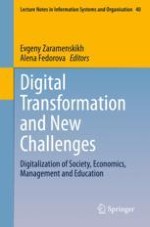2020 | OriginalPaper | Chapter
Providing Models of DSL Evolution Using Model-to-Model Transformations and Invariants Mechanisms
Authors : Boris Ulitin, Eduard Babkin
Published in: Digital Transformation and New Challenges
Publisher: Springer International Publishing
Activate our intelligent search to find suitable subject content or patents.
Select sections of text to find matching patents with Artificial Intelligence. powered by
Select sections of text to find additional relevant content using AI-assisted search. powered by
